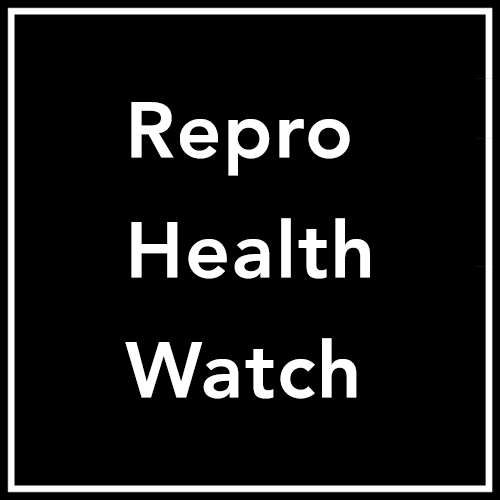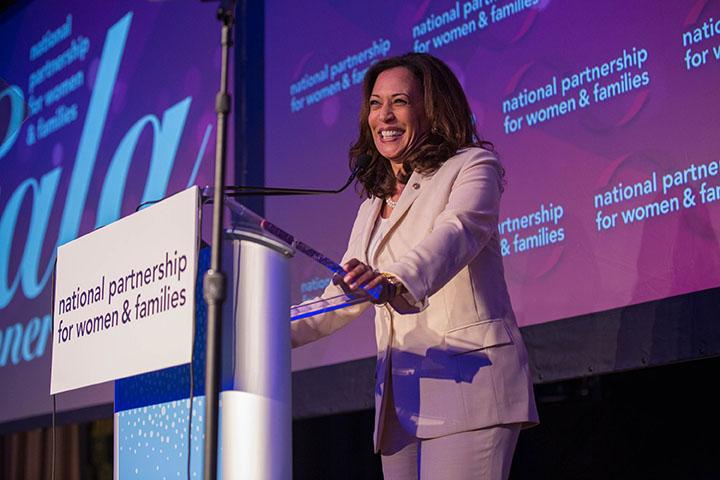Statement of Jocelyn Frye, President of the National Partnership for Women & Families WASHINGTON, D.C. – June 28, 2024 – Today, the Supreme Court upended sound, longstanding, legal precedent that has provided protections for everyday people for decades...

NEWS: Abortion rights advocates eye ballot measures for 2024
Abortion Rights Advocates Eye Ballot Measures for 2024
The Washington Post, October 11, 2022
Abortion rights advocates are exploring ballot measures to enshrine access to the procedure into state constitutions in 2024, including in a handful of Republican-led states with restrictions on the books. The effort represents an emerging strategy for the abortion rights movement and a growing belief that public opinion is on their side. After the Supreme Court overturned the constitutional right to an abortion, advocates know appealing directly to voters is one of the only ways to counteract bans in conservative states and reshape access in a post-Roe America. While in the early stages, discussions around whether to pursue an abortion rights ballot measure are occurring in states including Ohio, Florida, Arizona, Oklahoma, Colorado and Missouri, according to interviews with over a dozen advocates, liberal groups and others, some of whom spoke on the condition of anonymity to detail private conversations. One person familiar with the discussions said at least a dozen states are exploring — or are expected to soon explore — whether a citizen-led petition is a viable path to restoring or protecting abortion access in their state. “Every state that has access to direct democracy as a tool will consider if that is a strategy that makes sense for 2024, for 2026 and beyond,” said Sarah Standiford, the national campaigns director at Planned Parenthood Action Fund. But she cautioned that research and analysis will ultimately determine whether state advocates decide to move forward. Some abortion rights advocates warn the movement should proceed carefully, wary of pouring millions of dollars into a ballot measure campaign only to be defeated. Such endeavors can take years to plan and are resource intensive, involving copious cash, research and time. Meanwhile, some Republican-led states are fighting back against ballot measures, seeking to make it more difficult to pass such initiatives after liberal policies — from expanding Medicaid to raising the minimum wage — have won in conservative-leaning states across the country. But an unexpected Kansas victory has already provided a test case of how ballot measures may be useful in the future. In early August, roughly 59 percent of voters in Kansas defeated an attempt to strip abortion protections from the state constitution — a margin of victory that shocked both sides of the debate. The campaign opposing the measure used messaging it believed could appeal to voters across the political spectrum such as focusing on the freedom of Americans to make their own health-care decisions without government interference, a message Republicans typically use to promote their own health agenda.
‘A General State of Confusion’: How Abortion Misinformation Misleads Patients
Rewire News Group, October 11, 2022
As the legal status of abortion in some states changes from one day to the next, people who need abortions are scared, confused, and hungry for information. This is particularly true among communities that face the greatest barriers to abortion access, including young people and people of color. Unfortunately, abortion-related misinformation—whether intentionally misleading or not—abounds both in online spaces and via word of mouth. Inaccurate and misleading sources can be difficult to distinguish from trusted, vetted ones, and advocates worry that the prevalence of misinformation could delay or deter people seeking an abortion. The stakes couldn’t be higher: As more and more states ban abortion, pregnant people’s appointments are already being delayed, forcing them to pay for more expensive procedures. Any further delay, or a scam that results in financial loss, could be the difference between someone getting their wanted abortion and being forced to remain pregnant. “In broad strokes, the most common pieces of confusion and misinformation we see have to do with the legal gray area we’re in,” Lynn McCann, the Baltimore Abortion Fund’s co-director, said. “We’ve been hearing a lot from callers who live in a state where abortion is still legal, but they think it’s banned. It’s hard for us to tell where people are getting that message. Is it deliberate, or is it because of a general state of confusion?” In all likelihood, it’s a mix of both. When talking about abortion-related misinformation, the same actors usually rise to the top of the list: crisis pregnancy centers, or CPCs. These anti-abortion fake clinics have long been known to lure in abortion seekers, often by posing as real clinics. They share false and stigmatizing information about abortion with the goal of delaying care or preventing them from having abortions altogether. Even when Roe v. Wade was the law, CPCs outnumbered legitimate abortion clinics by more than 3-to-1 and had a 5-to-1 funding advantage. CPCs are now expanding—and they’re taking advantage of this moment of confusion and panic. Amanda Carlson, abortion fund director and senior policy associate at Cobalt Advocates in Colorado, said she is aware of at least one instance in which a patient traveled to Colorado thinking they had an appointment for an abortion at what was a CPC. Fortunately, they got in touch with a Colorado abortion fund that helped them secure an appointment at a real clinic, “but the fact that the CPC let them travel here?” Carlson said. “That was disturbing to me.”
An Abortion Ban With Unexpected Consquences for Older Mothers
The New York Times, October 7, 2022
When Senator Lindsey Graham, Republican of South Carolina, proposed a national ban on abortions after 15 weeks of pregnancy, the bill sparked controversy across the political spectrum. But few spoke of its potential impact on the growing number of women who are having children in their 30s. The proposed ban would allow exceptions to save a woman’s life and for some pregnancies resulting from rape and incest, but it notably lacks exceptions for fetal abnormalities. As such, it would sharply restrict options for the growing numbers of older women with pregnancies that are long-delayed and much wanted — but also come with a greater risk of conditions like Down syndrome. The median childbearing age in the United States has increased in recent decades, reaching 30 in 2019, up from 27 in 1990. But older mothers are more likely to conceive fetuses with chromosomal abnormalities, and the test most commonly used to detect those disorders can only be performed after a pregnancy is 15 weeks along, beyond Mr. Graham’s proposed window for abortion. Some anatomical anomalies, too, cannot be diagnosed until later in pregnancy. Older mothers are also more likely to enter pregnancy with health conditions that can worsen as gestation progresses and can require termination to save the woman’s life or prevent disability. While highly educated women have long delayed childbearing, American women from all economic, racial and ethnic backgrounds are having children at older ages, according to Anne Morse, a survey statistician at the Census Bureau. The most significant changes have occurred among Black mothers and women who were not born in the United States, whose median age of giving birth increased to 28 from 24 and to 32 from 27, respectively, over the past 30 years. “There have been large declines in births to women in their 20s in every single demographic group,” Dr. Morse said. And every demographic group, with the exception of Native American and Alaska Native women, has seen an increase in birthrates among women aged 35 to 39, she said. Mr. Graham’s bill, which is not expected to pass in a Congress narrowly controlled by Democrats, has been controversial even among Republicans who oppose abortion, and several Republican senators told reporters that the issue is best left to the states to decide. Only a small percentage of abortions take place after 15 weeks gestation: In 2019, 95.6 percent of abortions reported to the Centers for Disease Control and Prevention occurred before the 16th week.
Spread of Catholic Hospitals Limits Reproductive Care Across the U.S.
The Washington Post, October 10, 2022
The Supreme Court decision overturning the constitutional right to abortion is revealing the growing influence of Catholic health systems and their restrictions on reproductive services including birth control and abortion — even in the diminishing number of states where the procedure remains legal. Catholic systems now control about 1 in 7 U.S. hospital beds, requiring religious doctrine to guide treatment, often to the surprise of patients. Their ascendancy has broad implications for the evolving national battle over reproductive rights beyond abortion, as bans against it take hold in more than a dozen Republican-led states. The Catholic health-care facilities follow directives from the United States Conference of Catholic Bishops that prohibit treatment it deems “immoral”: sterilization including vasectomies, postpartum tubal ligations and contraception, as well as abortion. Those policies can limit treatment options for obstetric care during miscarriages and ectopic pregnancies, particularly in the presence of a fetal heartbeat. “The directives are not just a collection of dos and don’ts,” said John F. Brehany, executive vice president of the National Catholic Bioethics Center and a longtime consultant to the conference of bishops. “They are a distillation of the moral teachings of the Catholic Church as they apply to modern health care.” As such, he said, any facility that identifies as Catholic must abide by them. The role of Catholic doctrine in U.S. health care has expanded during a years-long push to acquire smaller institutions — a reflection of consolidation in the hospital industry, as financially challenged community hospitals and independent physicians join bigger systems to gain access to electronic health records and other economies of scale. Acquisition by a Catholic health system has, at times, kept a town’s only hospital from closing. Four of the nation’s 10 largest health systems are now Catholic, according to a 2020 report by the liberal health advocacy organization Community Catalyst. The 10 largest Catholic health systems control 394 short-term, acute-care hospitals, a 50 percent increase over the past two decades. In Alaska, Iowa, South Dakota, Washington and Wisconsin, 40 percent or more of hospital beds are in Catholic facilities. “It’s all about market share,” said Lois Uttley, a senior adviser to the hospital equity and accountability project at Community Catalyst. Uttley, who has been tracking hospital mergers and acquisitions since the 1990s, said that with fewer choices, patients today face more difficulty obtaining reproductive services. In Schenectady, N.Y., Ellis Medicine is in talks with the multistate Catholic giant Trinity Health.
Judge Upholds Florida’s Ban on Medicaid Coverage for Gender-Affirming Care
The 19th, October 12, 2022
U.S. District Judge Robert Hinkle on Wednesday upheld Florida’s rule preventing Medicaid coverage of gender-affirming care for patients of all ages, denying the preliminary injunction sought by the transgender people affected by the policy. The state’s ban on Medicaid coverage disproportionately affects low-income trans people and went into effect on August 21. The judge’s denial means that relief will not come to trans people affected by the policy as the lawsuit against the rule, led by the Southern Legal Counsel in coordination with Lambda Legal and other groups, continues to work its way through Tallahassee’s district court with a new trial date. One of the plaintiffs who sought the move explained to The 19th the effect the Medicaid rule had on their family. Jade Ladue, parent of K.F., a 13-year-old transgender boy named as a plaintiff in the lawsuit, worries that her son’s anxiety, stomach pains and night terrors will come back if his gender-affirming care was interrupted through the Medicaid coverage ban. K.F., referred to by his initials in the lawsuit to protect his privacy, receives puberty-blocking medication through an implant that was covered by Medicaid. Ladue attributes her son’s improved mental health to being able to access the care, but also to him being accepted by the family and feeling able to live as himself. The implant may not be working as effectively as his doctors want it to. If his blood work doesn’t improve by December, K.F. will have to switch to injection medication — which costs about $3,000 out of pocket per dose. Ladue, the sole income earner for her family in Sarasota County, would not be able to afford the medication without Florida Medicaid coverage. “We live pretty much paycheck to paycheck at this point,” Ladue said. Her family has offered as much support as they can give, but that still wouldn’t cover the monthly costs. “There’s no way we could afford a few grand every month, a couple months.” Without Medicaid coverage, either getting K.F. his next implant or switching to injected puberty blockers would cost the family money they don’t have. And next year or around his 15th birthday, K.F. may want to start taking testosterone as part of his transition to align his gender expression with his identity. Seven other states currently exclude gender-affirming care from Medicaid programs, according to the Movement Advancement Project, which tracks LGBTQ+ policy nationwide. In 2019, the Williams Institute found that 152,000 trans adults across the country are enrolled in Medicaid — and many had uncertain access to gender-affirming care.
ICYMI: In Case You Missed It
Overturning Roe deepened our reproductive health crisis and increased the need for full-spectrum doula support. Access to #fullspectrumdoula care can address the maternal health and abortion access crises in communities of color. Our new report details how https://t.co/h1sBtKqpDb pic.twitter.com/9qtOjfesTt
— National Partnership (@NPWF) October 13, 2022
We respect your privacy. Read our policy.
Note: The information contained in this publication reflects media coverage of women’s health issues and does not necessarily reflect the views of the National Partnership for Women & Families.


